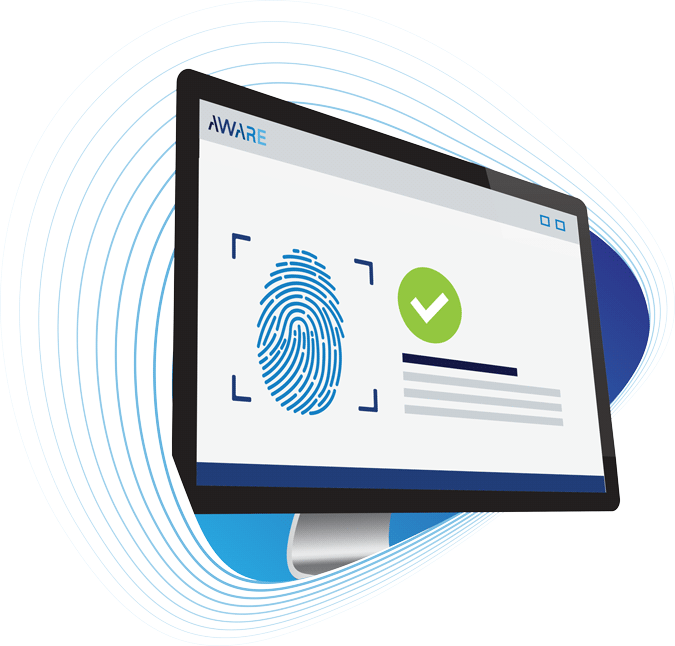The evolution of law enforcement biometrics and crime prevention strategies has enhanced the rate at which law enforcement is able to bring justice for individuals impacted by crime. From fingerprinting to the creation of biometric databases of facial and iris recognition, law enforcement and biometric technology have had a long and seamless history.
History of law enforcement biometrics
The history of biometrics spans the course of centuries. Here are the highlights as it pertains to law enforcement: The earliest account of a biometric identification system can be traced as far back as 500BC in the Babylonian empire but the first record of wouldn’t be until 1800s Paris; Alphonse Bertillon developed a method of specific body measurements for the classification and comparison of criminals. Bertillon’s system was just the beginning, from there, Edward Henry was able to develop a fingerprinting standard called the Henry Classification System. The Henry Classification System quickly replaced Bertillon’s system and was used to identify criminals and as a form of signature on contracts.
The biometric boom happened in the 1900s; biometrics grew exponentially as a field of research. In the UK, the Metropolitan Police started the use of biometrics for identification in 1901. In 1902, the New York police were the first to use biometrics for identification within the US and the French police began the same process late that year. By the 1920s, the FBI had created its first Identification Department, establishing a central repository of criminal identification data for US law enforcement agencies. Fingerprint and facial recognition were so widely used in law enforcement, in 1969 the FBI put funding towards developing automated processes. This was a catalyst for the development of more sophisticated sensors for biometric capture and data extraction.
Current biometric technology available to law enforcement
Biometric technology has evolved over the years as research within the field continued. Today, law enforcement officials have a plethora of biometric tools at their disposal. This wide-ranging category includes Criminal ID solutions, Automated Fingerprint Identification Systems (AFIS), Automated Biometric Identification Systems (ABIS) and facial recognition. Additionally, law enforcement agencies are also able to use voice and iris recognition algorithms.
Criminal ID solutions are made up of criminal AFIS systems, the use of biometrics by police officers in the field, prison/courthouse applications and counter-fraud and terror initiatives. AFIS uses digital imaging to capture a fingerprint and compares one set of minutiae data with a large database of similar records while ABIS is used for large-scale biometric identification and deduplication. It enables matching of a live sample against many existing biometric templates to find a record of a particular individual and verify his or her identity. Lastly, facial recognition algorithms create a biometric template by detecting and measuring various characteristics, or feature points, of human faces, including location of the eyes, eyebrows, nose, mouth, chin, and ears. Two templates are compared to yield a match score, which indicates the likelihood that the two images belong to the same person.
Benefits of biometric technology in law enforcement
The main benefits of biometric technology in law enforcement are detection and prevention of crime. However, the combination of the technology available to law enforcement officials have helped accelerate the rate at which crime is solved and boosted the efficiency of policing. With biometrics, law enforcement officials can identify suspects at a faster rate than ever before in the field; decreasing the amount of manpower that would go into the identification process. With the advancement of technology, officials no longer have to spend hours matching fingerprints or photos—the facial recognition algorithm, AFIS and ABIS are programmed to run stand-alone. Law enforcement officials are always in the need of precision and accuracy—biometric technology today allows them to do that.
Aware’s law enforcement offerings
Rapidly and accurately identifying potential suspects is a critical function for law enforcement officers. And that is precisely why law enforcement agencies all over the world have deployed Aware software and solutions. Law enforcement agencies can use AwareABIS™ to support their fingerprint, facial and iris recognition needs. Its modular architecture helps law enforcement officials configure and optimize the system for civil or criminal applications. Aware’s law enforcement offerings can be tailored to meet the need of any department size—big or small. As criminal activities continue to take place, it is imperative that law enforcement officials use biometric technology to be able meet the demand of police work and bring swift justice to those impacted by crime.
For more information about Aware’s wide range of law enforcement offerings, please contact us below or visit our webpage.
